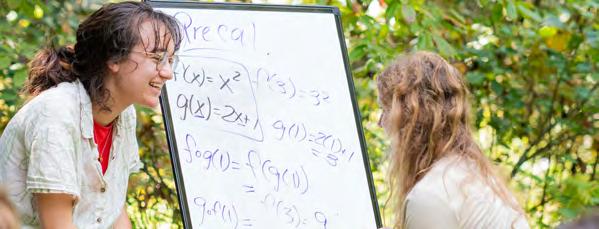

The Common Sense of Belonging at Eagle’s Nest Foundation
Paige Lester-Niles, Camp Director and Molly Herrmann, Camp Registrar and Diversity, Equity, and Inclusion ChairpersonFor decades, when folks talk about Eagle’s Nest Camp and The Outdoor Academy, the most common words that they use to describe the feeling they have about this place and experience seems to be “community,” “belonging,” and “home.” We are grateful to be able to create a place that imbues this feeling in our participants. As we dive deeper into intentionally creating a place of belonging, we find ourselves considering what a community of belonging is: For whom has it been created? How can it morph and change to continue to grow into a space of belonging for everyone? How can it embrace people who have been underrepresented at ENF, so that they are not just included but are also asked to contribute in meaningful ways to the remaking and growth of the community? Our goal is true belonging - a space where the cultures and voices of many are not just accepted, but are celebrated and woven into the new fabric of our community.
How do we go about doing this? How can we expand our understanding of belonging? How can we create a space where people truly belong, and don’t just fit in? From our perspective, one valuable tool is looking at belonging through the lens of “common sense.” You may be wondering, “what do you mean by ‘looking at belonging as ‘common sense?’” We mean that a community where belonging is common sense is one that embraces belonging in all conversations and discussions related to how the community is structured and functions; it isn’t an afterthought or an additional way of considering how we will or can do things to support groups of people who have traditionally been underrepresented in these conversations. It recognizes that as well intentioned as we are, marginalized groups have still had to bend and change in some way to be part of our community where their voices and contributions are underrepresented or absent.
In a community that regards belonging as common sense, considerations about belonging and inclusion are central in all discussions, plans, and initiatives from the very beginning. In other words, in these discussions,

belonging is a key ingredient of a delicious dish, not just the condiment or sauce that is added later. It is the starting point for all major discussions and decisions. It guides the construction and implementation of policies, procedures, programming, and mission to support everyone and amplify the needs, contributions, and voices of all of our members, particularly those who have been historically underrepresented.
As we build upon incorporating this perspective at Eagle’s Nest, we learn more about the stories, experiences, and ideas of historically underrepresented peoples. Our work is to be very thoughtful so that we don’t unintentionally leave out the views of folks who are not part of the dominant culture, and to be mindful of the breadth of cultures, experiences and views that make up our community. Doing so helps us appreciate and respect a variety of value systems within our community, creating a place of belonging. We construct a space where the voices of marginalized

groups are meaningful, and where they are able to contribute to the growth and expansion of the community so that we are not just welcoming others into the community, but we are joyfully making them part of the community. That’s where true belonging exists.
In order to create this community, we need to continue to research and learn more about a variety of cultural systems, beliefs, and values that are not part of the dominant one. We need to be able to shift and expand the viewpoint of our community to incorporate multiple perspectives of understanding, and not merely translate something that is part of an underrepresented culture into something that relates to a dominant culture or worldview within the community. Doing so can result in flattening or misrepresenting cultures and value systems. A true community of belonging accepts and appreciates the value of various cultures without
To read more on ENF Diversity, Equity, and Inclusion projects visit our website at https://www.enf.org/dei/
trying to compare them with a more familiar or dominant culture. Our goal is to celebrate the richness and privilege of having those cultures as part of an expanding community.
As we continue to work to create a community anchored in belonging, where the concept of belonging is the common sense or common language of the community, we understand that our efforts toward this goal are never complete. We continue to review, reassess, and reconfigure our community in all discussions, from the very start, so that everyone’s well-being is considered, everyone has a meaningful voice, and everyone can thrive, not just survive.
For information on how to create communities of belonging and resources visit the website for The Othering & Belonging Institute at UC Berkeley
https://belonging.berkeley.edu/

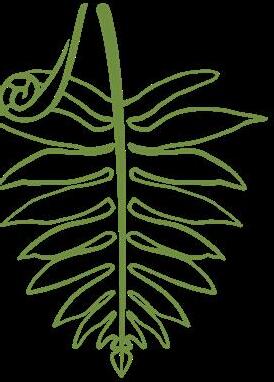
Being Intentional The Root of Eagle’s Nest Educational Philosophy
Ed Haubenreiser, Assistant Camp DirectorDuring OA’s Renewal Week before the start of Semester 58, Sebastian Slovin of “Nature Unplugged” came to campus to share insights on the rising concerns of technology use and nature’s role as an antidote. One of his prompts for us was “What was nature to you as a child? How did it affect you later in life?”
My first thought, as a child of the Chicago suburbs, was sports. I have a movement need, well understood by my parents, so virtually every season involved some variation of running around outside. The heat of two-a-day football practices in the summer, the wind that blasted off the highway next to our lacrosse field, and even the freezing temperatures and crunchy snow walking in and out of the basketball gym are all sensations still vividly felt today. I have always enjoyed being active outside, so it is safe to say that it has been a theme that led me to where I am today.
I told my parents about the prompt and that reflection, and they were surprised. “What about the farm we always took you to? You don’t remember going rafting out west? Or kayaking up north?”
I was equally surprised that those were not the first memories that came to mind. Why were they not?
Simply put: the activities my parents remembered, while certainly fun and special in their own way, were not my first thoughts because that was all they were to me in that moment: an activity.
The sports I participated in, however, had a deeper meaning. I was on a team, a small community with a tangible ethos shared by everyone within it, working together towards a group goal, and whatever happened during our time together – a win, a loss, an injury, dealing with summer heat or strong winds off of a highway – was something we all experienced together. You could say the same about a class at school or a cabin at a summer camp, both environments where a group comes together to work in harmony in order to move towards the collective goal, and what happens along the way is the binding force that makes the communal experience memorable. The hope for these communities is a net positive impact from the experience that allows its members to function better in their everyday lives than they had before being on the team, in the class, or in the cabin.

Integral to each of those communities, though, is the person who helps guide them in those reflections and towards that brighter future: the coach, the teacher, and the counselor. Leaders.
The beauty of young people is their energy for the present, and the beauty of leaders is their understanding of both the present and the potential outcomes in the future as a result of the present. That understanding is what informs the leader to orchestrate the practice, the lesson, and the routine so members of
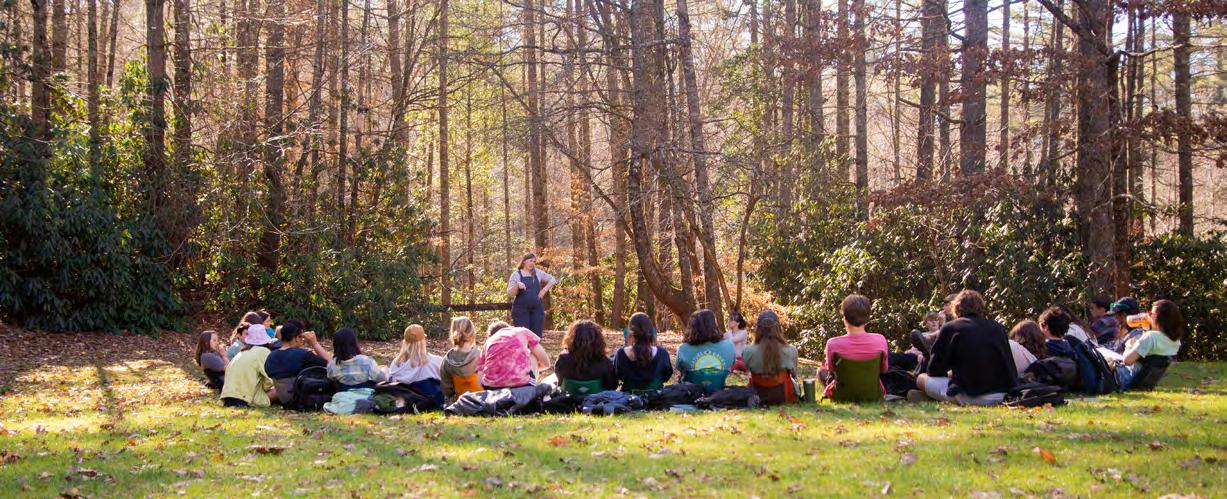

the community can fruitfully and positively work towards their goal. In that way, the leader is intentional about the shared experience of the group, where deep meaning is cultivated within each member in perpetuity.
At Eagle’s Nest, we are clear about our intentions. The goal of our programming is “the betterment of human character,” and our way of going about achieving that goal is through our use of experiential education and our promotion of the natural world. As leaders – and when our participants take on leadership roles – we understand Maslow’s Hierarchy of Needs (1954) as a model for interpersonal motivations towards learning and growth. Whether it is inside the cabin or out on a trek, we ensure that the needs forming the foundation of the hierarchy (physiological, safety, and love and belonging) are met so that members of the group can work towards the top of their fulfillment: self-esteem and self-actualization.

My favorite coach these days – and, based on awards, many others’ favorite coach – is Ted Lasso. The fictional character is a successful American football coach tasked with leading an average English football team with minimal understanding of both the game and the country. Despite his comical lack of knowledge, widespread doubt among players and fans, and contempt from the owner, Ted Lasso and the team he inherited soon became a well-run machine. How?
In order to reach those higher echelons of Maslow’s Hierarchy, one has to gain a solid understanding of their identity. This is achieved by doing, and in the process of doing, individuals discover their unique abilities and traits that contribute to or come from personal goals, values, and beliefs (Erikson, 1968). In our leader’s role as a facilitator, they look to Kolb’s Experiential Learning Cycle (1984) as the structure for doing and learning by doing: we provide our participants with an experience, make time for reflection of the experience, help to conceptualize the learning from that reflection, and provide additional opportunities to apply those newfound concepts.
And so important to this entire process is the environment in which it takes place (Montessori, 1950). We are privileged to be nestled into one of the most biodiverse landscapes in the world, equipped with the resources to both learn about it and learn from it. The Outdoor Academy begins every morning reflecting up on Morning Watch, and they spend weeks at a time deep within Pisgah National Forest – on a trek or in Classes in the Field – to explore and to learn. Eagle’s Nest Camp ends each day holding hands and singing beneath the pines and the stars, and they send off camping trips into the woods on a daily basis so cabin mates and casual acquaintances can become closer in their relationships. All of these practices, of course, are done intentionally by a community who undergoes, understands, and cares about the same educational and growth processes.
It is because the team’s success was not about performance in the sport. It was about the environment Ted created: he maintained hope and optimism in the face of ridicule, his kind gestures empowered his players and colleagues to be themselves, and his capacity to empathize and believe in those around him motivated the community to try their best at what they did. They won some games and still lost others, but they knew they were successful because they knew they became better people in the process.
If you’ve watched the TV show, you know there’s a magic to that kind of environment. If you’ve been to Eagle’s Nest and The Outdoor Academy, you know what that magic feels like first-hand.
Sources:
Erikson, E. H. (1968). Identity: Youth and Crisis. New York: Norton.
Kolb, D. A. (1984). Experiential learning: Experience as the source of learning and development. Englewood Cliffs, NJ: Prentice-Hall.
Maslow, A. H. (1954). Motivation and personality. New York: Harpers.
Montessori, M. (1967). The discovery of the child. New York: Ballantine Books.

YOUR IMPACT
2023 Annual Fund Successes
Thank you to our incredible community for making 2023 a year to remember!
With support from our 538 donors, together we raised $335,839 for the Annual Fund in 2023. Your gift supports scholarships for future campers and students, Diversity, Equity, and Inclusion efforts for faculty, staff, and participants, building and site improvements, special projects, endowed funds, and more. We are beyond grateful for your continued support. THANK YOU!
What Your Dollars Did: 2023

5% Programs
29%
3% Special Projects/ Building Funds
$419,400 awarded in aid
# of OA Scholarships:
(61% of all students)
16% Scholarships
of financial aid is funded by donors (20% of all campers)
22
36% Endowed
40% Unrestricted
$506,728
Total Raised
(includes $170K special endowment)
$127,166 awarded in aid
# of Camp and Hante Scholarships:
96
Are you ready for a semester of a lifetime?
APPLY
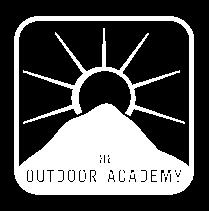




CRAFT INTELLECT ENVIROMENT COMMUNITY
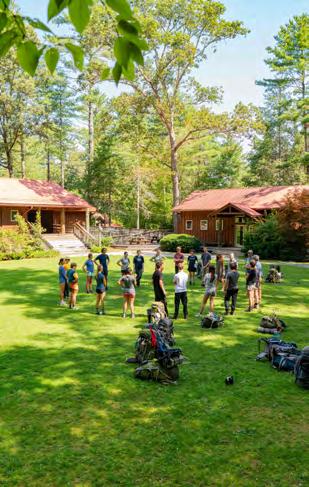
Planned gifts are gifts for…ever.
Leave a lasting legacy by including ENF in your estate plans.
Our Sustainers have designated gifts to a variety of funding opportunities that touch every corner of our programming. We can accept planned gifts of any size to any of our current funds (including Unrestricted) or endowed funds.

The benefits of planned giving are numerous to both you and to future generations of campers, students, and adventurers at Eagle’s Nest and The Outdoor Academy. If you would like to learn more about becoming a Sustainer, Eagle’s Nest Foundation’s development office is ready to assist with:
• General information about planned gift vehicles that Eagle’s Nest may accept
• Information about fund and endowment options to suit your philanthropic goals
• Additional resources to help you make decisions
Please contact us directly to discuss your philanthropic ideas and goals for Eagle’s Nest or to receive a copy of a sample fund agreement. Development Director: Cara@enf.org



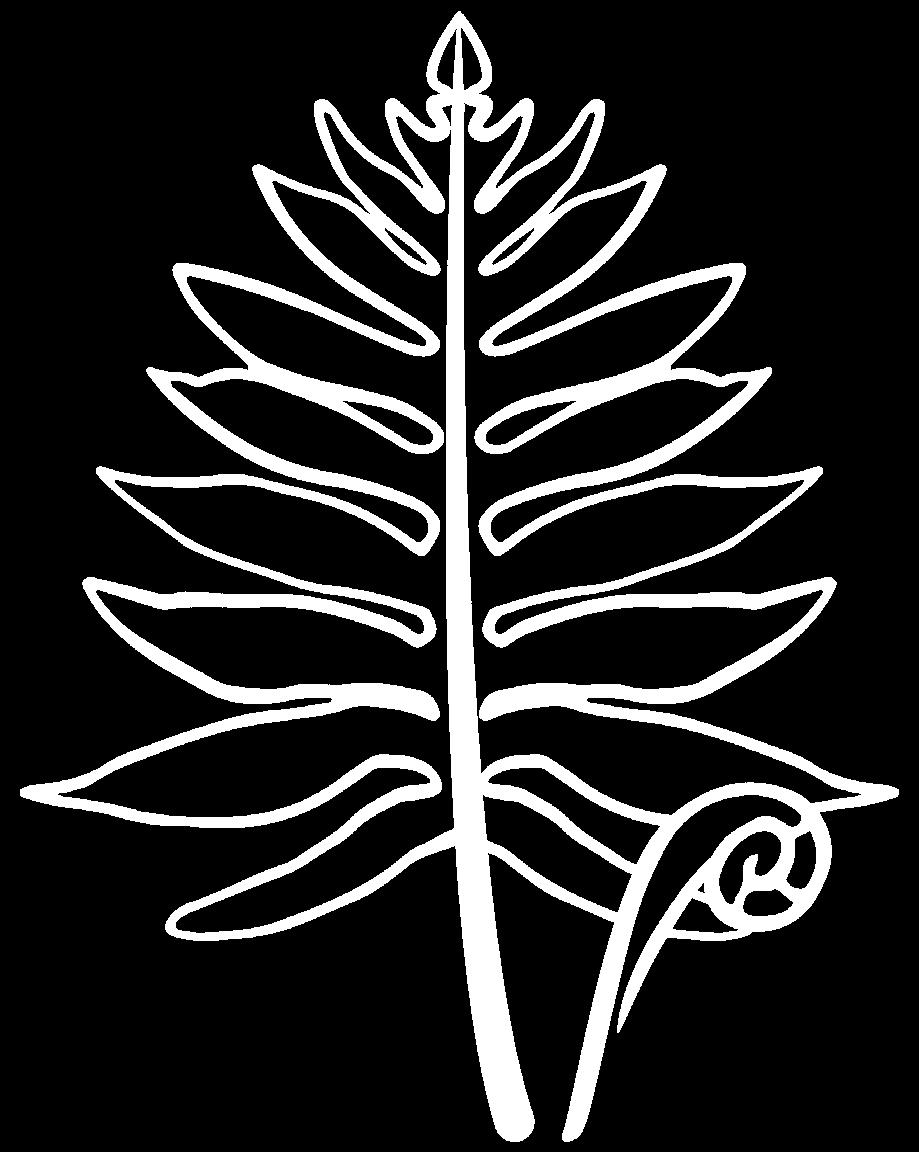
us on an international trip to Spain or across America’s pristene wilderness of The Boundary Waters!


An Authentic Experience
Photographing for Eagle’s Nest Camp and The Outdoor Academy
Alex Ngamhuy, Marketing CoordinatorBefore finding myself here as the Marketing Coordinator for Eagle’s Nest Foundation, I worked for a small music school as a piano teacher, usually teaching classical music to young children and teens, with an occasional adult student here and there. I filled my days with as much music as I could, and when I wasn’t doing music, I was usually off taking pictures with whatever fancy camera I had just spent my paycheck on.
Photography and music have always been similar mediums to me. I consider both of them art forms, and they’ve always been a comfortable way for me to express myself. In the same way I bring focus on a pretty melody, I compose my photography to highlight something I find visually interesting. On the other hand, teaching music was completely different to me than playing music. Ask any great music teacher how they feel about mastering an étude as opposed to the overwhelming joy and pride they feel when they hear their student play the étude perfectly, and they will tell you that the latter is usually far more rewarding. Playing music was about my own self-expression, while teaching music was about the experience of the student.
So how does this translate to my photography? When I first started as a part-time photographer for Eagle’s Nest Camp, I was swept away by this warm feeling of nostalgia and sweetness in the summer air. The sun’s heat warming my skin, frogs croaking in the lake, and the small bits of sunlight breaking through the dancing leaves high above my head. I let my guard down and caught myself smiling at the little moments campers shared together. They compared their unique looking rocks, raced to their next activity, cracked corny jokes, passionately argued over petty disagreements, and then found solutions to said arguments. I tried to take pictures of what was around me, but was often unsatisfied with the resulting images. My pictures wouldn’t reflect what I knew this place to really be until I shifted my mindset.



experience. I was no longer an outsider hiding behind a lens while trying to capture pretty pictures, but felt more like a pseudo-camper/counselor sharing this sentimental sense of place and belonging associated with this camp. And when the autumn season came, I applied the same approach to photographing The Outdoor Academy experience. I immersed myself in Classes in the Field, crafted with Will, our wood carving teacher, and even took part in Giving Day with Semester 56.
Being with Eagle’s Nest Foundation has taught me that my art has a place within this community. That what I create reflects the time I spent and moments I shared with these people. And that I will always be welcomed in our programs with open arms.

Just like teaching music, the focus of my photography at Eagle’s Nest Camp had nothing to do with me, but rather the experience of the campers. I was used to framing photos perfectly with what I considered to be aesthetically pleasing, but that takes away from the authenticity of these camper experiences. I stopped searching for myself and started observing the culture and community of Camp. I went to lunchtime singing, talked to the campers and counselors about their day, tried my hand in some activities, and immersed myself in the camp



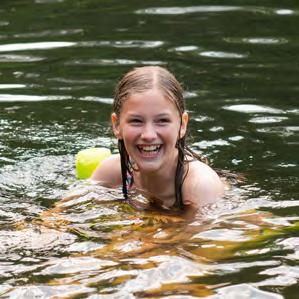



Teaching Self Reliance at Eagle’s Nest
Paige Lester-Niles, Camp DirectorWhen they were in 3rd or 4th grade, my kids started making their own school lunches. We made sure that we had all the makings for a healthy lunch, but they were responsible for putting it all together in the morning. Sometimes they were clever enough to pack up leftovers the night before, and sometimes they just grabbed an apple or a cheese stick on the way out the door. Their choices weren’t always the best, or the ones that I would have made for them, but they were important choices for them to make on their road to independence and self reliance. These were the first steps in transferring the responsibility of care and decision-making to them, when the stakes were low, so that they would be prepared to stand confidently on their own in the years to follow when I wasn’t there to swoop in with the lunchbox they left in the car.
Self reliance and the ability to navigate difficult situations on their own is a critical skill for children to learn. Parents begin preparing their children to make decisions and be independent from the time that they are very young. When they begin to eat solid foods, we place different items in front of them to taste and devour or push back out of their mouth. We encourage them to crawl, and then to walk, and eventually we teach them how to ride a bike, or swim or drive; these are all skills that allow them to move about in the world on their own. As hard as it can be to let go of their hand or the back of the bike when we know that they will probably wobble and fall before finding stability, we do so knowing that we won’t always be able to support them. We instill confidence in them, and teach them judgment so that when they are on their own, they will be able to make good decisions that we hope will lead to a healthy, happy, meaningful life.
And yet, somehow it can get harder to encourage this growth as our children grow. We celebrate their abilities and accomplishments, but it is challenging to stand back and watch them wobble, even though the wobbles strengthen their abilities to do things well on their own.
At Eagle’s Nest Camp, one of the seven character strengths we promote is self reliance. We know that teaching a child to trust and rely on themselves builds confidence, decision making skills, independence, courage to try new things, and the ability to be flexible and resilient in the face of challenges. Independence leads to freedom, which William Glasser includes in his “Choice Theory” as an essential human need. Children learn to rely on themselves at camp: by making their own choices about the activities they want to take, by practicing problem solving when they are homesick, by speaking up and not just going along with the crowd when something isn’t right…there are a plethora of opportunities for campers to try on making their own decisions. Sometimes they make great decisions that build on their abilities, and sometimes when they wobble the natural consequences lead them to make better decisions in the future. Camp is designed to be a place where parents can’t swoop in with their kids’ “lunchbox” and children need to learn to be independent of their parents. All of this happens in a safe, low stake environment that is created with the intention of nurturing children to become responsible adults.
After high school, my son Finn and his best friend Griffin, who he met when they were 8-year-old campers, set off from Bar Harbor, Maine to bike to Montana. When I listened to them planning or saw their faces as they put their loaded panniers on their bikes and realized how heavy they were I wanted to jump in. I knew they had a challenging journey ahead of them, and that they probably should have done a little more planning. I was nervous. The stakes were high. But I knew the skills that they had learned over many years at Camp, on Hante, and at The Outdoor Academy. In addition to knowing how to build a fire, fix a camp stove, and deal with physically challenging days, they had learned how to make good decisions and how to care for themselves. When I watched them peddle away without looking back I knew that their stomachs were probably full of butterflies and that their hearts were warm with the excitement of the journey ahead. They wobbled a little along the way, and they also made it all the way across the country to Southern California in under two months.
I’m proud of them, and for all of the kids who grow from the challenges they face: the camper who is terrified of the lake but learns to swim and the homesick camper who becomes a counselor for other children who miss home… I’ve seen and heard of countless successes by campers while they were at Eagle’s Nest or in their lives after camp. I know that they have all worked hard to achieve their goals, and I’m grateful for the counselors, mentors, teachers, and experiences they had at Eagle’s Nest that led to the self reliance they needed to be successful in their quests.
Spring Birdwatching
in Western North Carolina
Sophie Pippin, OA Admissions Counselor and Ben Sunding, Camp Program Manager
H

appy Spring, everyone! Spring is an amazing time of year for many reasons, one of which is because every spring, millions of birds make their way north to their breeding grounds from South and Central America. Bird migration is one of the most spectacular natural phenomena in the world, and Western North Carolina happens to be one of the best places to experience this event, as it is a hub for a variety of bird species. Whether you are an experienced birdwatcher, or just now finding an interest in the hobby, follow along with this article as Sophie and Ben guide you through birding this season!TIPS ON BIRDING from Ben and Sophie:
To make the most of your bird watching experience, it is important to come prepared. Bring a good pair of binoculars, a field guide, and a notebook to record any sightings. Look for birds in areas with plenty of trees and vegetation, and pay attention to their calls and songs, as this can help you identify them.

We’re curious what you find!
We’ll be sharing our bird finds this spring, and we hope you will too! Tag us on Instagram and use #birdwatchingwithENF and we’ll share your post. We can’t wait to see all these WNC birds, and learn about all the birds where you live too!
RoseBreas
t ed Grosbeak




2

You should also remember to be respectful of the birds and their habitats. Avoid disturbing them or their nests, and stay on designated trails and paths. With a little patience and perseverance, you can have a fun and rewarding birdwatching experience.


Another helpful option is to use Merlin Bird ID from Cornell. This allows you to track the birds you’ve seen, and it helps to identify them by their song. How cool!


Returning Faces at the Nest


Originally from Santa Fe, New Mexico, Aidan first came to The Outdoor Academy as a student where she became passionate about the environment and outdoor education. Aidan attended Colorado College where she studied Environmental Studies and Education, culminating in an intensive semester-long program for aspiring environmental educators. She utilized her degree leading backpacking trips in Alaska and Iceland before returning to OA as a Resident Wilderness Educator.
Aidan is thrilled to be back at The Outdoor Academy taking on the role of Environmental Science teacher. She is excited to continue to inspire young minds through OA’s revolutionary interdisciplinary learning approach. You can find Aidan exploring Pisgah Forest on foot or bike when she is not teaching.
Laura Kraus, OA Interim Math TeacherA former OA Math Teacher, Laura has returned to teach for Semester 58. After teaching at OA for a few years, Laura taught high school math elsewhere in NC, and then went on for another graduate degree in environmental economics. She’s recently focused on the math behind utility-scale renewable energy production as an independent consultant. We’re lucky to have Laura back!
Passings:
Joseph Richard Huber, Eagle’s Nest Business Manager 1970 -1987, husband of Mariella Davidson Waite (daughter of Alex and Hannah Waite, founders of Eagle’s Nest Camp), and father to campers Anna and Stephen, passed away at the age of 96 on January 7, 2024.
Joe was a gifted educator and lover of outdoor adventures and also strong supporter of Eagle’s Nest.

Allison Moore (Camp, OA, Former Staff) married Garrett Krehbiel in a small private ceremony in North Carolina in October 2023 followed by a big celebration at her parents’ house in Neptune Beach, FL in December.
ENF
WORDSEARCH
WORDBANK WATERFALL CAMPFIRE BACKPACKING MOUNTAINS MUSIC PADDLING CRAFTS SWIMMING LAKE HART HIKING PISGAH QUAD FRIENDS CLIMBING

Sidney Ngamhuy (Staff) & Alex Ngamhuy (Staff): Baby Boon Oaken born January 25th, 2024
Cara Varney (Staff) & Todd Weinkam: Baby Sevi Dell born October 5th, 2023
Julia Fuster (Former Staff) & Matt Kern: Baby Sylvia Albina born January 24th, 2024

Spring 2024
NEST CHATTER
Eagle’s Nest Foundation
828-877-4349
www.enf.org
Centennial Priorities Update
In 2027, just three years from now, Eagle’s Nest Foundation will be 100 years old. Since 2014, the staff and trustees have been working diligently toward four overarching Centennial Priorities created to strengthen ENF’s organizational ability to best fulfill its mission into the next 100 years and beyond.
In October of 2023, the Board of Trustees and Directors began a reflection and visioning exercise to both assess accomplishments since 2014 and refine priorities to carry us through to our Centennial in 2027. This work introduced a fifth priority, “Emerging Priorities,” to the visioning process. At the end of February, the Board, with facilitation by Doug Borwick from Outfitters 4, spent a day updating strategic plans to guide ENF’s focus over the next three years, and drive work efforts toward our Centennial Priorities. These plans will also serve as a set of guideposts for the Foundation’s next Executive Director (for whom a search is currently underway) who will step into my place when I retire in September. Stay tuned for reports on our visioning work coming out in the weeks ahead.
